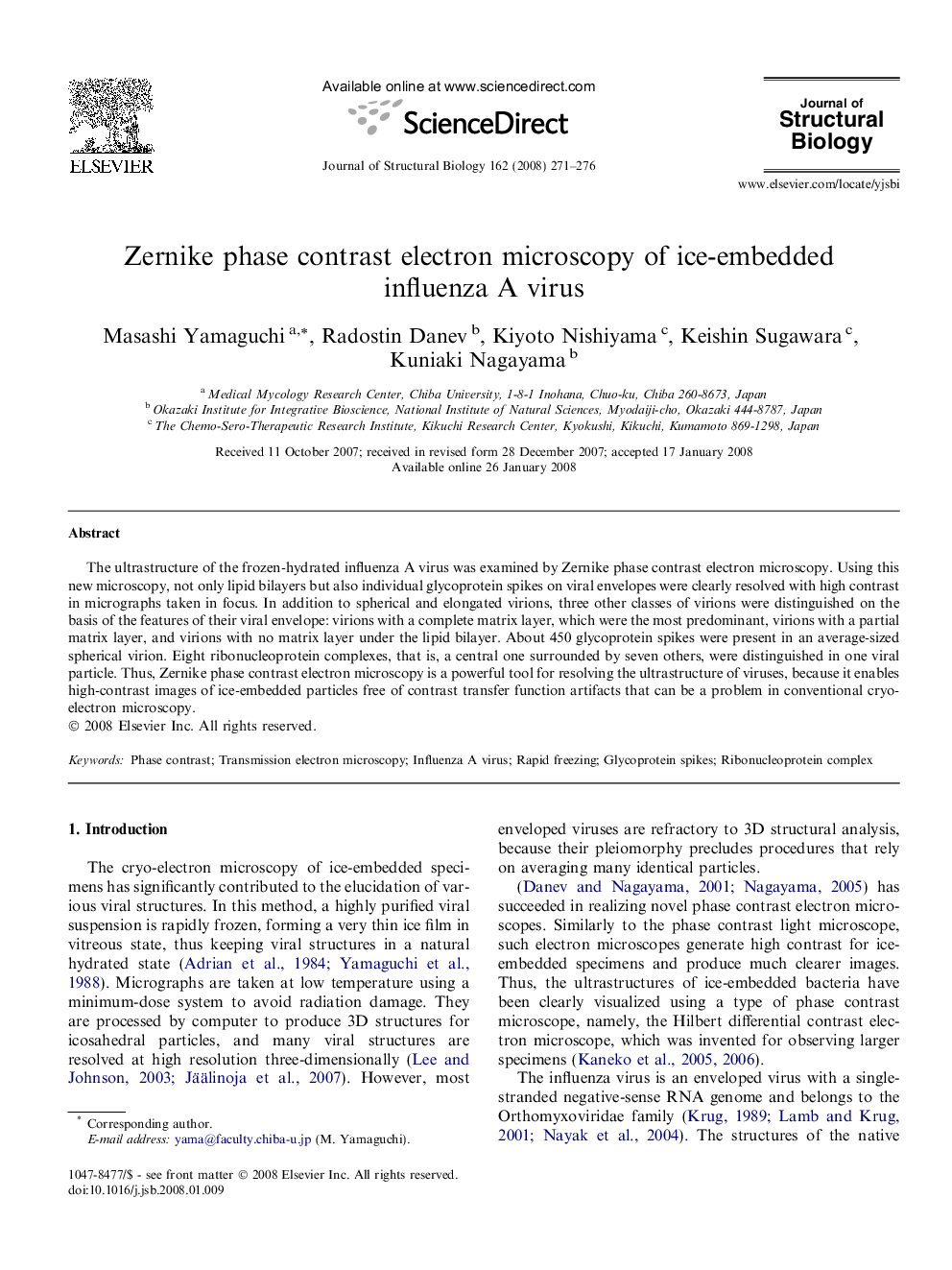| Article ID | Journal | Published Year | Pages | File Type |
|---|---|---|---|---|
| 2829205 | Journal of Structural Biology | 2008 | 6 Pages |
The ultrastructure of the frozen-hydrated influenza A virus was examined by Zernike phase contrast electron microscopy. Using this new microscopy, not only lipid bilayers but also individual glycoprotein spikes on viral envelopes were clearly resolved with high contrast in micrographs taken in focus. In addition to spherical and elongated virions, three other classes of virions were distinguished on the basis of the features of their viral envelope: virions with a complete matrix layer, which were the most predominant, virions with a partial matrix layer, and virions with no matrix layer under the lipid bilayer. About 450 glycoprotein spikes were present in an average-sized spherical virion. Eight ribonucleoprotein complexes, that is, a central one surrounded by seven others, were distinguished in one viral particle. Thus, Zernike phase contrast electron microscopy is a powerful tool for resolving the ultrastructure of viruses, because it enables high-contrast images of ice-embedded particles free of contrast transfer function artifacts that can be a problem in conventional cryo-electron microscopy.
